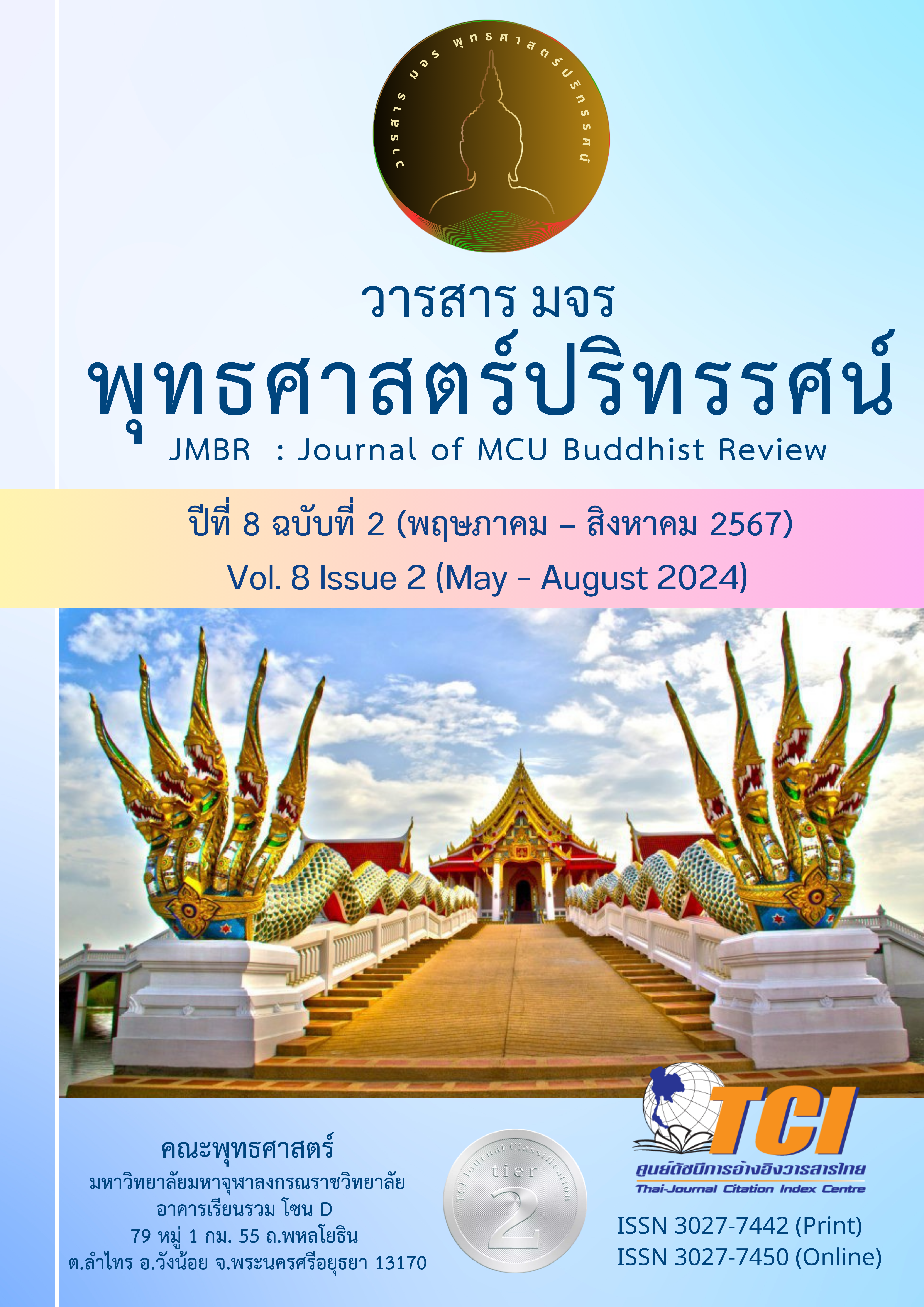พัฒนาการของต้นปาริชาตในพระพุทธศาสนา
Main Article Content
บทคัดย่อ
บทความวิชาการนี้มีวัตถุประสงค์ เพื่อศึกษาพัฒนาการของต้นปาริชาตในพระพุทธศาสนา ผลการศึกษาพบว่า เรื่องราวของต้นปาริชาตในพระไตรปิฎกมีความเกี่ยวข้องกับพระพุทธเจ้า 3 เหตุการณ์ ได้แก่ 1) พระพุทธเจ้าไปโปรดชฎิลอุรุเวลกัสสปะทรงเก็บดอกปาริชาตที่สมบูรณ์ด้วยสีและกลิ่น 2) พระพุทธเจ้าเปรียบการปฏิบัติตนของพระอริยสาวกกับต้นปาริชาต และ 3) การอธิบายเชิงเปรียบเทียบการใช้ชีวิตเหมือนต้นทองหลางสง่างามอยู่ในป่าเพียงลำพัง ส่วนในวรรณกรรมพระพุทธศาสนาพบ 3 เรื่องที่อธิบายถึงต้นปาริชาต ได้แก่ 1) เตภูมิกถา 2) ปฐมสมโพธิกถา และ 3) กามนิต-วาสิฏฐี วรรณกรรมทั้ง 3 เรื่องนี้ให้ความสำคัญกับต้นปาริชาตมากน้อยแตกต่างกันไป พัฒนาการของต้นปาริชาตที่ปรากฏในวรรณกรรมพุทธศาสนาช่วงแรกในพระไตรปิฎกพบว่า เป็นการเปรียบเทียบต้นปาริชาตกับการละอาสวะกิเลสเพื่อเข้าถึงพระนิพพาน ต่อมาในงานวรรณกรรมเตภูมิกถาและปฐมสมโพธิกถาให้ความสำคัญกับต้นปาริชาตว่าเป็นสถานที่อันพระพุทธเจ้าแสดงพระอภิธรรมโปรดพุทธมารดา เมื่อเวลาผ่านไปต้นปาริชาตถูกนำมาใช้เป็นสัญลักษณ์ประจำสวรรค์ชั้นดาวดึงส์เพียงเท่านั้น แต่ในวรรณกรรมพระพุทธศาสนาสมัยหลังพบว่ามีการขยายเรื่องราวของต้นปาริชาตไปในทำนองปาฏิหาริย์ โดยเฉพาะในวรรณกรรมเรื่องกามนิต-วาสิฏฐี
Article Details

อนุญาตภายใต้เงื่อนไข Creative Commons Attribution-NonCommercial-NoDerivatives 4.0 International License.
- บทความที่ได้รับการตีพิมพ์เป็นลิขสิทธิ์ของวารสาร มจร พุทธศาสตร์ปริทรรศน์
- ข้อความใดๆ ที่ปรากฎในบทความที่ได้รับการตีพิมพ์ในวารสาร ถือเป็นความรับผิดชอบของผู้เขียนบทความ และข้อคิดเห็นนั้นไม่ถือว่าเป็นทัศนะและความรับผิดชอบของกองบรรณาธิการวารสาร มจร พุทธศาสตร์ปริทรรศน์
เอกสารอ้างอิง
พระครูสิริรัตนโสภิต (ศรีวรรณ โสวณฺณสิริ). (2559). ปฐมสมโพธิฉบับล้านนา: การปริวรรตการชำระและการศึกษาวิเคราะห์. รมยสาร. 14(2), 79-87.
นิยะดา เหล่าสุนทร. (2543). ไตรภูมิพระร่วง การศึกษาที่มา. กรุงเทพฯ: สำนักพิมพ์แม่คำผาง.
บรรจบ พันธุเมธา. (2526). อันเนื่องด้วยชื่อ ชื่อเขมร. กรุงเทพฯ: คณะอนุกรรมการเผยแพร่เอกลักษณ์ของไทย ในคณะกรรมการเอกลักษณ์ของชาติสำนักเลขาธิการนายกรัฐมนตรี.
บ้านและสวน. (2543). สารานุกรมไม้ประดับในประเทศไทย เล่ม 2. กรุงเทพฯ: บ้านและสวน.
พญาลิไท. (2554). สมุดภาพไตรภูมิพระร่วง. กรุงเทพฯ: ธรรมสภา.
พระมหาวชิราวุธ วชิรเมธี. (2548). ปฐมสมโพธิกถา ปริจเฉทที่ 24 - 30: การตรวจชำระและศึกษาเชิงวิเคราะห์. วิทยานิพนธ์หลักสูตรพุทธศาสตรมหาบัณฑิต บัณฑิตวิทยาลัย: มหาวิทยาลัยมหาจุฬาลงกรณราชวิทยาลัย.
มหาจุฬาลงกรณราชวิทยาลัย. (2539). พระไตรปิฎกภาษาไทย ฉบับมหาจุฬาลงกรณราชวิทยาลัย. กรุงเทพฯ: มหาจุฬาลงกรณราชวิทยาลัย.
ราชบัณฑิตยสถาน. (2556). พจนานุกรมฉบับราชบัณฑิตยสถาน พ.ศ. 2554. พิมพ์ครั้งที่ 2. กรุงเทพฯ: ราชบัณฑิตยสถาน.
สมเด็จพระมหาสมณเจ้า กรมพระปรมานุชิตชิโนรส. (2556). สมุดภาพปฐมสมโพธิกถา. กรุงเทพฯ: ธรรมสภา.
อดอล์ฟ เจลลิรูป. (2552). กามนิต-วาสิฏฐี. แปลโดย เสถียรโกเศศ-นาคะประทีป. พิมพ์ครั้งที่ 8. กรุงเทพฯ: ศยาม.
อรไท ผลดี. (2537). ประวัติพรรณพืชทางศิลปวัฒนธรรมไทย. วารสารมนุษยศาสตร์วิชาการ. 2(1), 29-40.


